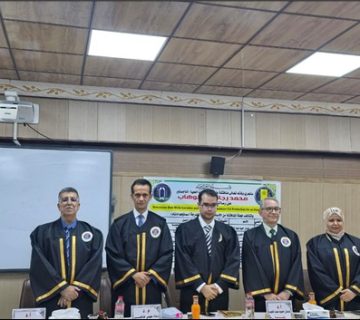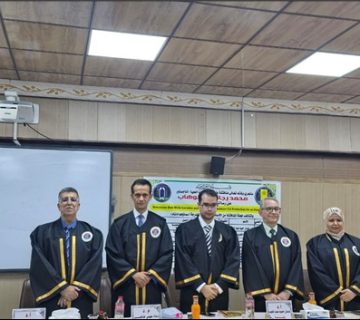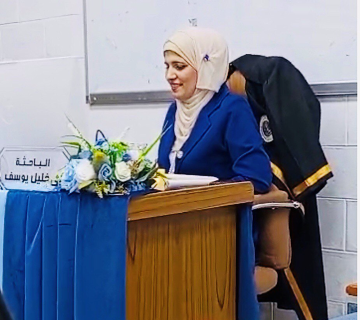The master’s thesis by the student (Sarah Khaled Ugla) was discussed in the Department of Civil Engineering on the research entitled (Evaluating the Moisture Susceptibility of Asphalt Mixtures Containing Recycled Concrete Aggregate and Modified by Waste Alumina) on Thursday, 2-22-2024, under the supervision of Prof. Dr. Mohammed Qadir Ismael
The discussion committee was formed of:
- Prof. Dr. Prof. Dr. Amjad Hamad Khalil University of Baghdad/College of Engineering (Chairman)
- Dr. Ammar A. M. Shubber University of Technology/College of Engineering (Member)
- Assist. Prof. Roaa Hamed Latief University of Baghdad/College of Engineering (Member)
- Prof. Dr. Mohammed Qadir Ismael University of Baghdad/College of Engineering (Supervisor)
The research goal:
The goal of this research was to determine how Recycled Concrete Aggregate (RCA) from demolished buildings can be used to make asphalt mixtures that are more resistant to the effects of moisture on the pavement. This recycling method has the goal of converting waste materials to new products with less environmental impact. Some researchers agree that RCA has lower durability than natural aggregate. So, the RCA was treated with diluted hydrochloric acid to improve its physical properties and surface texture. Scanning Electron Microscope (SEM) test results show that the untreated RCA presents a porous crystal structure, while the treated RCA shows a smoother surface due to the removal of the attached mortar layer by acid action.
Asphalt cement (40-50) brought from Al-Durrah refinery, is used in the preparation of asphaltic mixtures; mineral aggregate (19 mm maximum size grading) for the asphalt surface course; limestone dust used as conventional mineral filler; secondary aluminum dross (SAD) is utilized as a partial replacement for conventional filler at percentages of (10, 20, and 30%) by filler weight; and various percentages of RCA (0, 25, 50, 75, and 100%) by coarse aggregate weight. According to the Marshall design method, the Optimum Asphalt Contents (OAC) were determined. Then, two parameters were employed to assess the susceptibility to moisture: the Tensile Strength Ratio (TSR) and the Index of Retained Strength (IRS). To find these parameters, both the indirect tensile strength (ITS) test and the test for compressive strength were conducted.
Marshall test results indicate that increasing RCA by (25, 50, 75, and 100%) causes an increase in OAC% by (4.08, 7.14, 10.2, and 15.31%), respectively. After treatment of the RCA, the OAC decreased by approximately 2%. Based on TSR and IRS, the best percentages for the asphalt mixture with the minimum amount of moisture damage were found to be 25% RCA mixed with 20% SAD. Samples of untreated RCA showed an increase in TSR of 13.95 percent and an increase in IRS of 17.43 percent, while samples of treated RCA showed increases of 14.41 percent and 18.26 percent, respectively.








